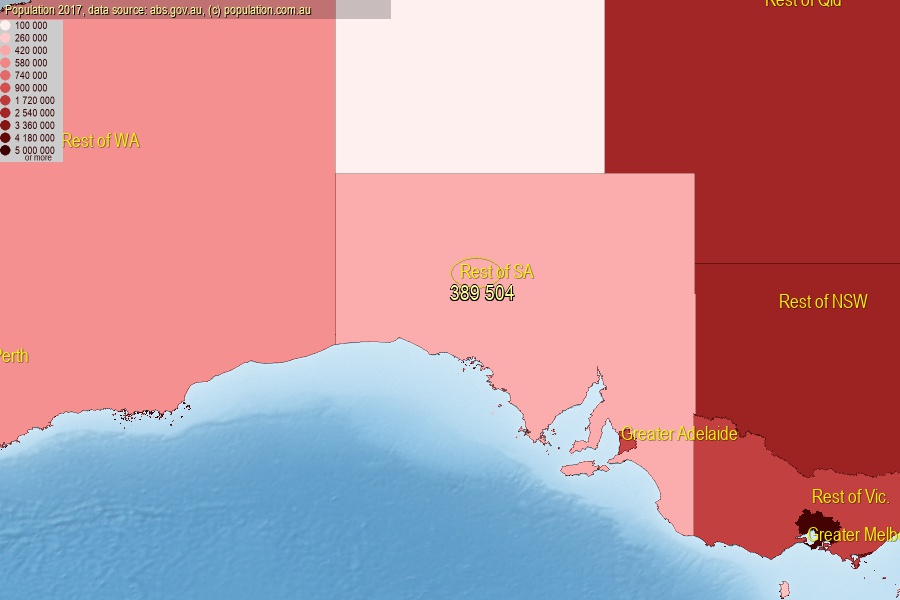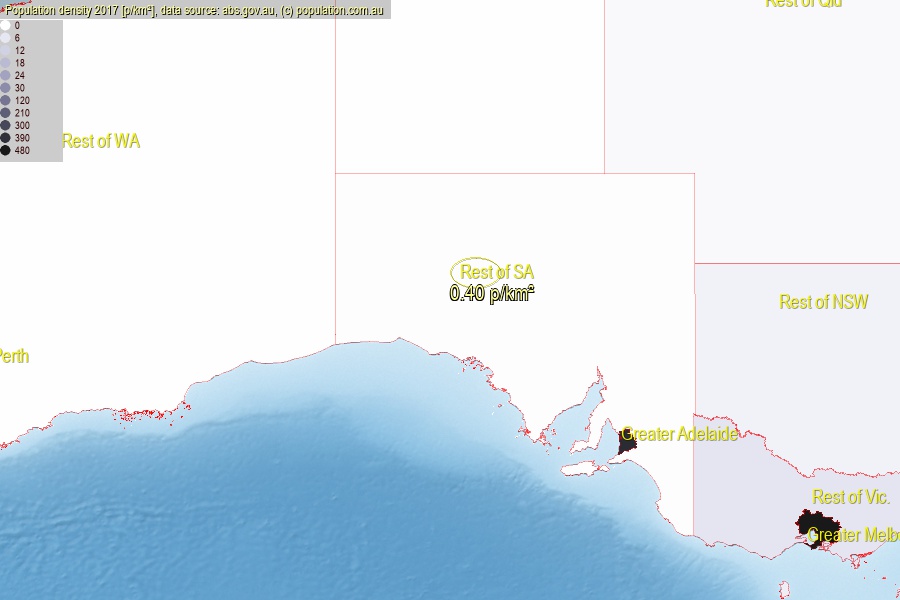 population.com.au
population.com.auLast official estimated population of Rest of SA (as Greater Capital City Statistical Area) was 389 504 people (on 2017-06-30)[2]. This was 1,6% of total Australian population. Area of Rest of SA is 981 015,00 km², in this year population density was 0,40 p/km² . If population growth rate would be same as in period 2016-2017 (+0.18%/yr), Rest of SA population in 2025 would be 395 296. [0]



Click to enlarge.
Population [people], population density [p./km²] and population change [%/year] [2]
[1991-1992] +0,48 %/Y
[1992-1993] +0,08 %/Y
[1993-1994] +0,00 %/Y
[1994-1995] -0,33 %/Y
[1995-1996] -0,21 %/Y
[1996-1997] +0,08 %/Y
[1997-1998] +0,18 %/Y
[1998-1999] +0,21 %/Y
[1999-2000] +0,08 %/Y
[2000-2001] +0,19 %/Y
[2001-2002] +0,32 %/Y
[2002-2003] +0,44 %/Y
[2003-2004] +0,42 %/Y
[2004-2005] +0,50 %/Y
[2005-2006] +0,51 %/Y
[2006-2007] +0,86 %/Y
[2007-2008] +0,75 %/Y
[2008-2009] +0,65 %/Y
[2009-2010] +0,72 %/Y
[2010-2011] +0,35 %/Y
[2011-2012] +0,89 %/Y
[2012-2013] +0,77 %/Y
[2013-2014] +0,81 %/Y
[2014-2015] +0,62 %/Y
[2015-2016] +0,40 %/Y
[2016-2017] +0,18 %/Y
[0] Calculated with linear interpolation from officially estimated population
[1] Read more about GCCSA on abs.gov.au
[2] Population data from Australian Bureau of Statistics / ABS.Stat (Population and density: 2017; change: 2016-2017)
[3] Digital Boundaries: Australian Statistical Geography Standard (ASGS) 2016.